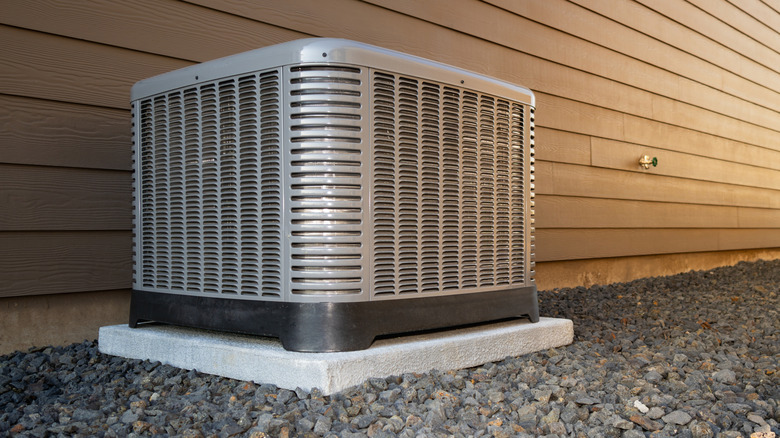How To Convert KW To HP For Air Conditioners
Kilowatts (kW) and horsepower (hp) are both measures of power, and converting one to the other is a matter of multiplying by a conversion factor. One horsepower is equal to 0.7457 kilowatts, and one kilowatt equals 1.337 horsepower. Neither unit is a reliable measure of an air conditioner's cooling power, though, because neither takes into account the efficiency of the refrigeration system itself. Nevertheless, it has been common for manufacturers to advertise the power rating of the condenser motor as a selling point, and the practice persists in some places.
Mechanical and electric power
Scottish inventor James Watt invented the term horsepower in the 18th century while he was working on improvements to the Newcomen steam engine. As a unit of mechanical power, it's the measure of the rate at which a machine can do a certain amount of work. In the world of physics, the word "work" refers to the product of the force required to move a certain weight and the distance the weight moves. Based on several observations, Watt determined that one horse working on a treadmill could lift 550 pounds of water 1 foot in one second, so he defined a horsepower as 550 ft-lb/s.
The watt, which is named after James Watt, is a measure of electric power, and it can be obtained by multiplying the voltage passing through an electric circuit by the current passing through the circuit. One watt is defined as the power produced when 1 ampere flows at a voltage of 1 volt. In mechanical terms, a watt equals 1 joule per second. A joule is a measure of work in the International System of Units. This definition gives rise to a conversion factor between the horsepower and the watt: 1 horsepower equals 745.7 watts. Because 1 kilowatt equals 1,000 watts, 1 horsepower equals 0.7457 kilowatts, and 1 kilowatt equals 1.337 horsepower.
The power of an air conditioner
An air conditioner consists of a condenser, a system of coils, and a refrigerant. The condenser compresses the refrigerant and circulates it through a series of coils. In the part of the coils nearest the condenser, the refrigerant is in the liquid state, but at a certain point, it passes through a tiny aperture and turns into a gas. Evaporation is an endothermic reaction that draws heat from the surroundings, so an air conditioner works by sucking the heat out of the surrounding air. The vaporized refrigerant continues back to the condenser, where it turns back into a liquid and begins a new journey through the coils.
The power developed by the condenser is a factor in how efficiently the air conditioner circulates the refrigerant and pushes it through the aperture into the evaporative coils, but it isn't the only factor that determines how well the air air conditioner works. The characteristics of the refrigerant and the size and length of the coils are also important. Consequently, rating the air conditioner in terms of the power of its motor is only an approximate representation of its cooling capacity. A better unit for measuring cooling capacity is the British Thermal Unit (BTU), where 1 BTU is the energy required to heat one pound of water by 1 degree Fahrenheit. The BTU is the standard by which air conditioners are measured in North America, as well as in many other countries.
For the sake of comparison
The label affixed to an air conditioner's motor should display the power rating of the motor, and depending on the country and the air conditioner, that may be the advertised rating of the air conditioner. If you want to compare a unit rated in watts to one rated in horsepower, you can convert from one to the other using the conversion factors.
For example, an air conditioner rated for for 1.5 horsepower has a power of just over (1.5 hp x 0.7457kW/hp) = 1.12 kW. A power rating of 3.5 kilowatts, on the other hand, means the motor develops (3.5kW x 1.337 hp/kW) = 4.68 hp.
